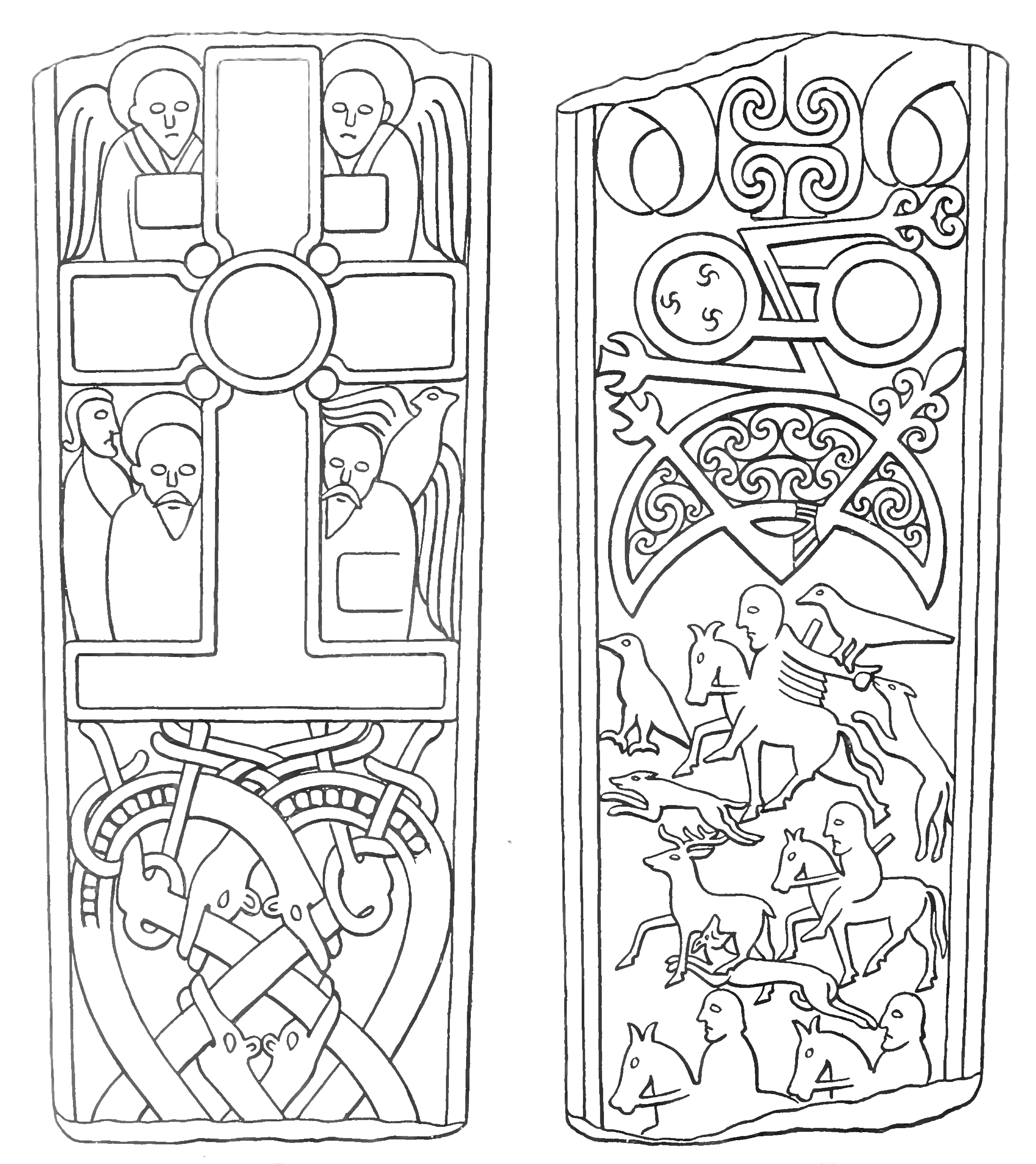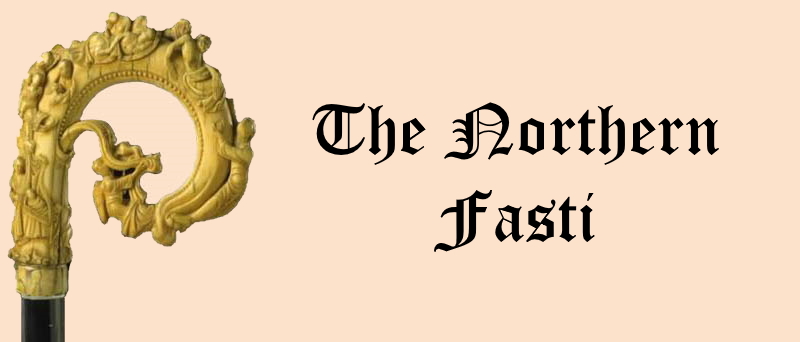Elgin Deanery
Elgin
Eilginn
Parish Church: OS Ref: NGR: NJ 216629 H.E.S. No: NJ26SW 15 Dedication: St Giles (Egidius)
Associated Chapels: Longmorn {NGR: NJ 232584}; Pittendreich {NGR: NJ 195611}; Pluscarden {NGR: NJ 14_55_}; Elgin Castle {NGR: NJ 212628};
Bogside {NGR: NJ 18_56_}; St John's Chapel {NGR: NJ }; St Peter's Chapel {NGR: NJ }; Thunderton House {NGR: NJ 215628}.
Holy Wells: Mary Well {NGR: NJ 208627}
The City and Royal Burgh of Elgin, the 'county town' of Morayshire, is picturesquely situated on the south bank of the River Lossie. It has been commented that, "There is hardly another town in Scotland whose origin is so legendary."1 However, there is not as yet, the slightest evidence to justify a claim for an earlier foundation than the 11th century, except the Class II symbol-bearing stone known as the Elgin Pillar, which was discovered in 1823 by men carrying out repairs to the road to the north-east of the present Parish Church of St Giles
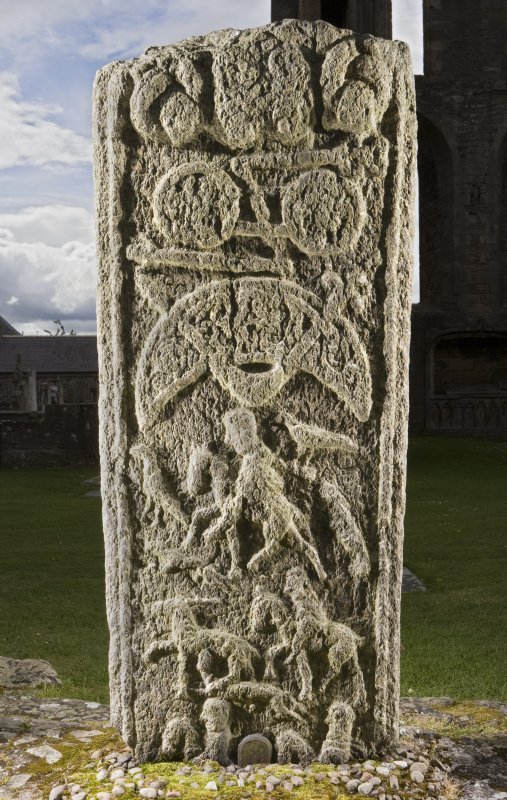
© H.E.S.
Elgin was perhaps of lesser importance in the Dark Age period than the community which had grown up on drier ground around Meft and Urquhard further to the east
Erected in the later 12th century,6 the Parish Church of Elgin, dedicated to St Giles (or St Egidius as some would have it), reflected the growing importance of the town which is shown by it development as one of the royal centres in the north of Scotland. William the Lion issued 14 charters from Elgin between 1165 and 1214, in contrast to only one from Inverness and six from Aberdeen.7
The parish church occupied an island in the centre of what is now the High Street. It would appear that it was this church that was granted by William the Lion to the Bishop of Moray between 1187 and 1189.8 In 1390 it, along with much of the town, was burned by the Wolf of Badenoch. However, the damage must not have been catastrophic since the restored church went on to survive subsequent raids in 1402 by Alexander Macdonald of the Isles, and 1452, during the Douglas troubles.9 The church originally consisted of a nave, 80ft long and 60ft wide, of four bays with north and south aisles, short transepts, a central tower and a choir. The nave and aisles were separated by two rows of 'massy cylindric columns' and the tower had a 'saddle-roof'. The nave roof, which had been covered with stone slabs rather than slates, collapsed in 1679, and the necessary re-construction was completed in 1684. This work also required the restoration of the upper part of the west gable which had been damaged when the roof collapsed. The transepts were removed in the early 18th century (between 1700 and 1740). The choir - or 'the Meikle (Little) Kirk' as it had become known - which had been partitioned off from the rest of the church in 1621, was demolished in 1800. When the transepts were also removed, the Meikle Kirk was effectively separated from the Nave and it continued to exist for some time as a quasi-independent chapel.
Finally, in 1826, the nave, or 'Muckle Kirk' was demolished and the surrounding graveyard was cleared away, with many cartloads of human remains being either re-buried within the grounds of the cathedral or mixed with earth and carried to the outskirts of the town and used as a dressing for pasture land!10 In this year also, the present 'classical' building was commenced. When a friend of the author was at Edinburgh Art College, this building was presented to the students as a wonderful example of the Greek Revival style of architecture - thankfully, tastes have changed since then! In my opinion, St Giles is a singularly unattractive building both outside and within and this opinion seems to have been supported by Mr H.B. Mackintosh.11
An important point to make note of here is that the parish of Elgin did not include the parts of the more modern burgh known as Lesmurdie and parts of Newmills, north-east of the River Lossie. These lands were always part of the parish of St Andrews.
St Giles (d. 710) was famed for healing cripples and, consequently, many of the churches which were dedicated to him were located on the outskirts of towns, near a chief entrance, in order to afford poor and lame travellers entering from the countryside a ready opportunity to seek the Saint's aid.12 When the orginal Parish Church was built in Elgin, it was situated on the eastern outskirts of the town as it then was; for in those early days many buildings stood more to the west. The area immediately to the east of the Ladyhill, with its royal Castle, was a natural attraction for commercial activities. Gradually, the town migrated further eastwards and came to surround the site of the Parish Church.13
In the Elgin Burgh Court Book is this rather curious entry, dated 3rd October, 154714 -
It is to be wondered if any other burgh (let alone Royal Burgh) in Scotland ever elected their patron Saint to the office of Provost! However, it is important to note that this meeting of the Burgh Council was held only twenty-three days after the disastrous Battle of Pinkie Cleugh, on the banks of the River Esk, near Musselburgh. The same council meeting also issued a proclamation throughout the Burgh to the effect that no widow could marry that year without the consent of the provost and magistrates. Since the Provost was a Saint who was long since dead, this permission could not be given and therefore the edict, in effect, banned all marriages for one year. It is thought that this arrangement was made from a fear that the heirs of those who fell at Pinkie might otherwise suffer the loss of their inheritance.15 Many of Elgin's burghers lost their lives at Pinkie, the Fiery Cross having been sent round by the Earl of Angus.
.jpg)
The 'niche' shown above the west window is believed to have contained an effigy of the Patron Saint.
The people of Elgin, like those across the whole of the north of Scotland in post-Reformation times, adhered tenaciously to many Superstitions which had come down through the generations from both Roman Catholic times and even before, from the Dark Ages. Historians wax lyrical about the Pagan celebration of Up Helly Aa but they tend to pigeon-hole it amongst the many traditions of the Norse people still celebrated in the Northern Isles today. Nearer to 'home' we have the Burning of the Clavie, a celebration still held only a few miles away at Burghead; and only a little further away, at Stonehaven, the local people to this day still celebrate the Fireball Festival on Hogmanay. These are all Hogmanay (New Year) celebrations which have fire as their common element. But Elgin, too, had traditional celebrations involving fire and, of course, because of the association with Pagan or Druidical beliefs, they were utterly condemned by the Presbyterian Church after the Reformation. The following is an extract from the Burgh Court Book which shows the determination there was to stop these idolatrous practices:
It is interesting to note that, from 1613, the parish was a collegiate charge comprising two clergymen. The Magistrates and Council had the patronage of both until the return of Episcopacy when they were returned to the crown. Later, at the end of Episcopacy, the patronage reverted to the Provost and Burgesses. In 1809, each of the two clergymen had equal stipends and each also had a glebe of about 4 acres, but the manse was the reserve of the 'senior minister'.
As we have already noted, within the old parish church, in addition to the High Altar, there were a number of additional ante-chapels. Over time, individuals came to endow these chapels and the Burgh Records occasionally reveal their names and their dedications.
| Name | Comments |
|---|---|
| Sanct Katherine | St Katherine's Croft lay just to the south of the lands of Fleurs at |
| Sanct Duthois (Duthac) | The Provost held the lands of this chaplainry on 19th June, 1581. The chaplain had a manse at what is now 96-98 High Street - it later became the Fife Arms Inn.17 |
| Our Lady | Founded in 1364 by Richard son of John, burgess of Elgin, for the 'weal' of his own soul and that of his wife Elizote Myser, his father and mother, and all the faithful departed. [R.E.M., no 242, p. 313-315.] |
| Ruid (Holy Rood) | Endowed by Hugo Herock in 1286 from his lands of Daldeleyt (Dandaleith) |
| Holy Cross | (Possibly the same as the Holy Rood.) |
1286 (c.8 September) On the Feast of the Nativity of the Blessed Virgin, Hugo Herock, burgess of Elgin, grants his lands of Daldeleyt (Dandeleith) for the support of two perpetual chaplains. One is to serve at the altar of St. Nicholas in the cathedral, the other at the altar of the Holy Cross in the parish church, where prayers should be said for his own soul, and that of Margaret, his wife, and their parents and children; also, for the soul of Alexander III., the illustrious King of Scotland, and the souls of Archibald, Bishop of Moray, and his successors. The chaplains are each to be paid 6 merks per annum, ½ at Pentecost and ½ at Michaelmas.18
1363 (20 October) William de Soreys, burgess of Elgin, grants 50s. per annum out of the rents paid to him by Henricus, son of Roberti, for certain perches of burgh land in the south of Elgin. This sum is to augment the income of the altar of the B.V.M. in the parish church of Elgin, in return for prayers for his own soul, those of his predecessors and successors, and all the faitful. Fine for failure - £40 towards the fabric of the cathedral.19
1363 (12 November) Willelmus Pop, son and heir of Willelmi Pop, burgess of Elgin, for the health of the souls of his predecessors, grants lands, etc. {see end-note for details} to augment a chaplain serving the altar of the B.V.M. in the parish church of St Giles.20
1365 (die Jovis in festo St Gregorii, pape.) Ricardus filius Johannis, burgess of Elgin, founds a chaplainry at the altar of the B.V.M. in the church of St Giles of Elgin, for the soul of his wife Elizote, Johannis and Emme his parents, and the souls of all the faithful departed.
The chaplain is to receive 100s. per annum, ½ at Pentecost and ½ at Michaelmas, and the rents of certain properties {detailed in the charter}.
The chaplain is also to have a house (burgagium) and a croft {see original charter for details}.
The Bishop and Chapter are to have the right of presentation.21
1398 (feast of the holy martyrs Abdon' et Sennen)22 An inquisition mandated by Bishop Willelmi into the 'chaplainry of Daldeleth' founded by Hugonem Herok at the altar of the Holy Cross in the parish church of Elgin - gives full details of its possessions.
Likewise, for the chaplainry founded by Richardum, son of Johannis, at the altar of the Blessed Mary in the said church.
The gift of 20d. and a stone of wax per annum by Andreas, son of Sythach, is recorded.
It is detailed that these bothans, "because of the fire," only pay one stone of wax to the altar per annum.23
1529 (11 May) - The King confirmed a charter granted by Alexander Gaderar sen., burgess of Elgin, whereby for the weal of the soul of Isobella, his spouse, he mortified to Master Thomas Gaderar, his son, chaplain, and his successors, celebrating at the
1544 (12 October) - "James Kar, chaplain of the ruid service (Holy Rood) within the paroch kirk … ". He is to have "tueff merkis" (twelve merks) per annum out of the common purse of the burgh, ½ at Whitsun, ½ at Martinmas, for his lifetime for as long as he carries out his duties in the kirk and the school.25
1545 (16 June)- Andro Strang is referred to in the Burgh Court Book as, "cheplane of the chaplanry of our Lade within the paroche kirk … ".26
1546 (4 May) - At the Head Burgh Court, (Sir) Thomas Rage [Rag] is admitted to a chaplainry [unspecified] in the Parish Church.27
1548 (13 November) - Sanct Kathereinis croft was set to William Gaderar.28
1550 (26 October) - " … that the baillies call the chaplanis of the {parish?} kirk and put ordour to them anent the uphalding of Goddis service and that they tabill certane honest men for gadering of Sanct Gelis lycht."29
1571 (29 January) - "Sir Florens Vinister [Winchester?], cheplan, comperit and ouergef fra him the lyfrent of Boyllis hortchet lyand upon the south syd of the said burgh quhilik he presentlie dwellis into with houses, biggingis, horchet and zairdis [houses, buildings, orchard and yards] standing thairupoun lyand betuix the lands of Our Lady chaplandry fundit within the paroche kirk of Elgin at the eist part and the stane wall sumtyme of the freiris minoris of the said burgh at the vest extending linally fra the bak passage of the said burgh at the north part to the croftis of land sumtyme pertenand to Thomas Zoung, now pertenand to Thomas Hay at the sowth part in fauoris of Jhone Annand, provest of Elgin."30
1572 (6 October) - At the Head Court. - The jugis hes ordanit twenty shillyngis yearly annuel to be uptakin furth of the ruid of land sumtym pertenying to (Sir) John Gibson and to Hector Angus lyand upon the North syd of the burgh of Elgin to be payit to (Sir) Thomas Robertson, chepland of Sanct Kathereinis caplenry fundit within the paroche kirk of the said burgh and to his successoris cheplanis thairof, quhilkis failzeing to the provest, bailzeis, cunsall and thesauraris thairof to be furtcumand to the utility and profeit of the commond guid of the said burgh as donatoris of the said chaplenry with vi s. viij d. to the thesaurer thairof and his successouris.31
1581 (3 July) - "The bailzeis ordanis the officiaris to pass to the personell presens of the haill personis within this burgh addetit in payment of the annuall rentis pertening to the chepland of Sanct Duthois chaplandrie fundat within the paroche kirk of Elgin and charge thame for to mak payment thairof to Johne Annand, provest of Elgin, quha is lauchfullie provydit to the said chaplandrie be his said fader patroun of the said chaplanrie lyk as he is to all emolumentis and proffettis thairof be the demission of Sir John Gibsone last chapland thairof."32
1647 (20 December) - Disposition by James Sutherland, tutor of Duffus, in favour of Thomas Calder of Sheriffmylne of two auchten pairts of land with the new land, grass lands and pertinents therof, togidder also with the moss vaird perteining therto of breid [breadth] threttie two speace and of lenth [length] extending from St Keathreine croft at the north to the burne of Tayok at the south.33
1727 (19 June) - Town Council Minutes. - "In respect the Guildrie have lately purchased from James Fraser the lands at the southwest end of the town called St Kathrine's crofts and there being some green ground on the north side of the said croft capable of improvement the Councill authorize the gildrie to till and improve the said piece of green ground and to march the same with the highway leading by the lands of Bilbohall to the toun provydeing they preserve and highway of fourtie foots of breadth leading to the toun betwixt the saids lands of St Kathrins at the south and the aughten part land of Elgin to the north."34
[Some confusion exists here caused by the fact that there was a chaplainry of St Katherine/Catherine in both the parish church and the cathedral.]
King Robert the Bruce, in his charter conferring the Earldom of Moray on his nephew, Thomas Randolph, reserved to his burgesses of Elgin the same liberties they had previously enjoyed in the reign of Alexander I., and about 1151 David I., gave the concession of a free 'hanse' to the burgesses, under which grant they acquired the right of free trade within the burgh, and the privilege of associating with each other 'in defence of their rights.'
It was during David's reign that primitive Craft Guilds are mentioned as existing in Scotland but, with the coming of the year 1214, a new order began. Besides materially affecting the character of the Craft Guilds, it placed them in relations with the Town Council, which, if not absolutely new, was seen to be much more important than before and this bore many advantages.
King William the Lion confirmed to all his burgesses in Moray their free hanse, to be held when they chose, where they chose, as freely and honourably as they held it in the time of his grandfather, King David. And Alexander II., on the 28th day of November, 1234, granted a charter at Elgin, addressed to the burgesses of the town, conferring on them the rights of a merchant guild as fully and freely as any burgh in Scotland possessed. This is the oldest Royal Charter possessed by Elgin.35
The Parish Church of Elgin was an important place for the Incorporated Trades and each had an altar situated in one of the aisles of the church at which mass would be said by a priest who acted as the Guild's chaplain.36 It would appear that certainly one, if not all, of these altars were 'decorated' with the craft's emblems. When the church was re-built following the collapse of the roof in 1679, it was furnished with lofts for the various Guilds. These lofts replaced the altars which were swept away by the advocates of the new Protestant faith. Mackinlay tells us that, "One of the craft emblems which adorned the lofts of the parish church of St Giles at Elgin was associated with the shoemakers, and received the name of The Crown of St Crispin."37
Plans were drawn up for the repair of the church and almost exactly a year after the disaster, on June 14th, 1680, the following appears in the Town Council Minutes:
By 1684, the church had been repaired at the substantial cost of about £4000 Scots. These repairs entailed the re-building of the upper part of the west gable, re-roofing the building, and re-seating the interior. The pulpit, Magistrates' loft, and many other lofts, were of massive oak and richly carved. The Trades Lofts had the emblems of their Crafts emblazoned upon them. In keeping with the excellent architectural traditions that Elgin Town Council has ever exhibited, the north and south transepts were removed about the year 1700 to widen the street. The interior of the roof was of open woodwork but, as it was found to be cold inside the church (especially in the winter months), the Town Council resolved in 1753 that it should be plastered, and a grant for this work was voted out of the Common Good Fund. In 1800, the Little Kirk which had been the choir of the old church, was taken down leaving only the old nave and the tower. Within the nave, the roof and side-aisles were supported by five massive pillars on each side, connected by 'pointed' arches. Four of the pillars were square but the central one on each side was round.39 The 'curiously' carved oak pulpit stood at the fourth pillar on the south side. Immediately to the west of it was the Magistrates' Loft, also of carved oak with a canopy of the same. Here, the civic dignitaries and the minister could survey the church interior which, it is said, had 'seating' for upwards of fourteen hundred people.40 Four brass hearses or chandeliers of antique workmanship, each containing twelve sockets for candles, were hung from the roof by chains of twisted iron, but the church was only lighted on the occasion of the winter communion which was held on the evening of the first Sunday in November. "It then exhibited a wonderful spectacle. The four chandeliers were filled with candles, and the pulpit and precentor's seat blazed with similar lights. The Magistrates and the Trades Incorporations had their own candlesticks, as also many of the private individuals [in the congregation]. In short, the church when illuminated was a blaze of light."41
To those who lived at a distance, the Muckle Kirk of Elgin always called up pleasing recollections, and to the native of Elgin, it was an object of sincere reverence. "A general feeling of dismay was experienced when it was determined, in 1826, to sweep it utterly away."42 It would appear that symptoms of decay had begun to manifest themselves again, and very probably, another accident like that of 1679 was dreaded. "Yet the pillars and walls were as strong as rocks, and many wished that a repair or reconstruction would have been attempted; but it was decided otherwise."43 At that time a taste for ancient architecture had a place in the minds of the 'leading men' of the town, and to this and to petty party feeling we owe the destruction of one of Elgin's principal landmarks and certainly one of the country's finest church buildings.
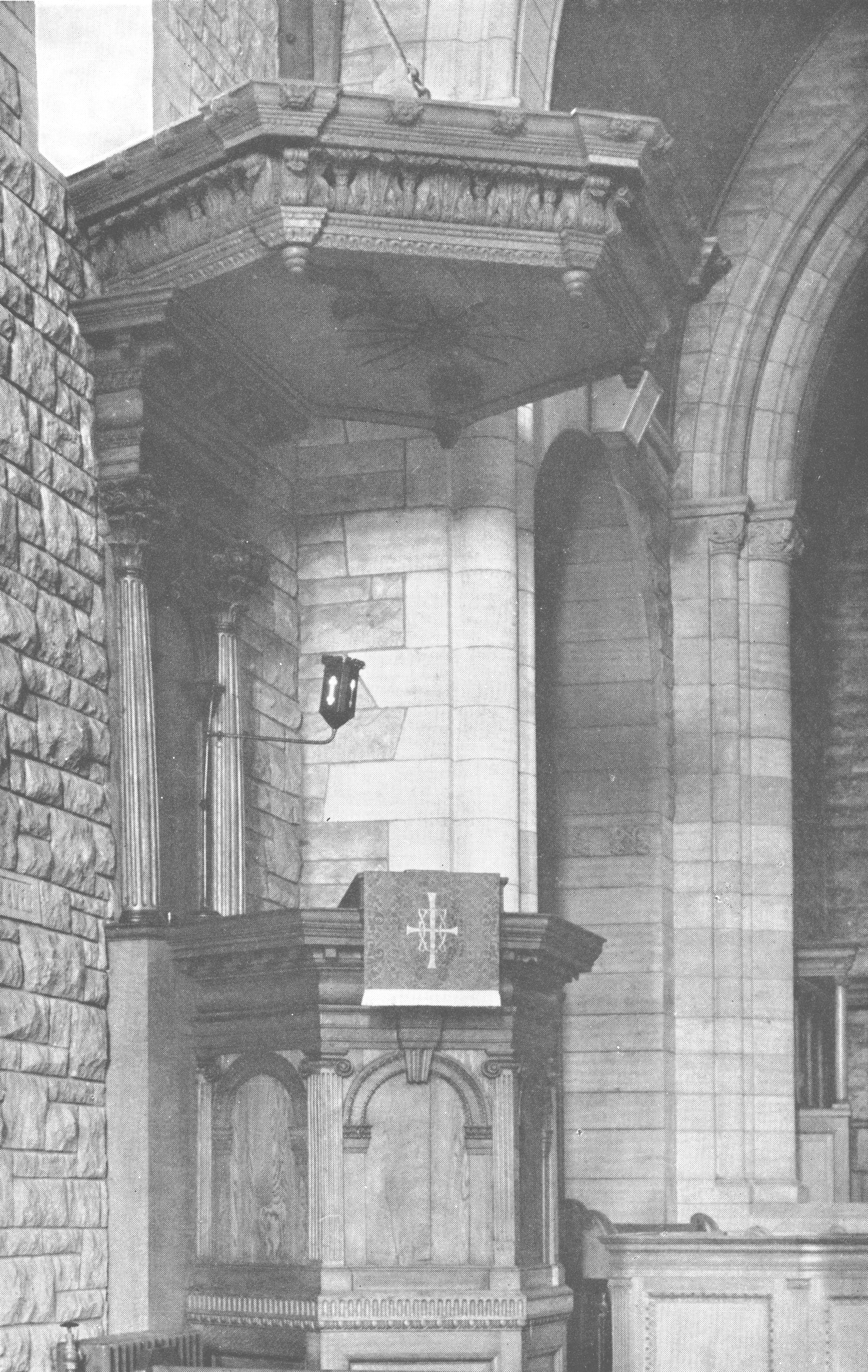
© John Wright, F.R.I.B.A..
On Sunday, 1st October 1826, the Sacrament was dispensed in old St Giles' Church for the last time. The next day, a thanksgiving service was preached by the Rev. Dr Richard Rose, of Drainie. No sooner had the congregation been dismissed than the contractor began to take the slates off the roof, and in the course of only two months the building was levelled to the ground. On 16th January 1827, the foundation stone of the present building was laid by Sir Archibald Dunbar of Northfield, Bt., Convener of the County Council and formerly Lord Provost of the burgh.44 The architect of this Greek wonder was Mr. Archibald Simpson of Aberdeen. The building was finished in August 1828 and opened for public worship the following month on 28th October. The cost is estimated to have been in the order of £8700. It has been noted that the stone used for the building came from the Oakwood Quarry, sometimes called the Hospital Quarry since it was also used to provide stone for the building of Dr Gray's Hospital. Since Archibald Simpson was also the architect for the Anderson Institute (1830-33), it is most likely that the same quarry provided the stone for it also.45
The ground, for a considerable distance around the Church of St Giles, was used as a place of burial from a very early period and many ancient tombstones have been uncovered at various times during road works and other excavations. Most famous was the discovery of what is commonly called The Elgin Pillar (see above), which was found at a depth of about two feet and to the north-east of the church.
It was the tradition across Scotland in the medieval era to use churchyards as a market-place for the community and for holding a town's Fair, and it is most likely that Elgin followed the same tradition. The Fair of St Giles is specifically mentioned in 1389 and that the churchyard was regularly used as the Market Place is alluded to in 1365.46 At least three 'special' market days or fairs were held in Elgin:
- Andersmes Marcat - From its name it would seem reasonable to suggest that this fair was held sometime near the festival of St Andrew (30th November). The Burgh Records show that, in 1635, Andersmes market was held on 1st December.46a
- Tarintie Mercat - The Solemnity of the Most Holy Trinity was celebrated on the Sunday following Pentecost.
- Michaell Marcat - The Festival of St Michael and All Angels is celebrated on 29th September.46b
In the early days, the horse market was held in the area at the foot of the Castle Hill, directly to the east, where is now Murdoch's Wynd. "The Horse Market is held [at the south end and east and west side of Ragg's or Murdoch's Wynd] and also without the West Port."46c
1505 "Item: the xiiij day of October in Sanct Johnis Chapell (Elgin), to the Kingis offerand on the bred, xiiij shillings. Item: To the priest of the samyn chapell to say mes there, xx shillings."48 No further information has been gleaned except that the chapel stood on the south side of the High Street, somewhere close to Number 80.
In the Exchequer Rolls of Scotland there is an entry in 1459-60 stating that "a chaplain in the castle [of Elgin] received two merks from "le Greyfschipe de Elgyn," besides eight merks he received from the lands of Pittendreich.53
1477 (22 November) - The King granted to James of Douglas and his heirs certain lands in the Lordship of Moray, he paying inter alia the sum of £5 6s. 8d. yearly from the lands of Pittendreich to a chaplain of the old foundation, on the Castle Hill of Elgyne.54 Similar payments are recorded in the years 1508 and 1514.
In 1557, with the Reformation just below the horizon, the sum of 40s was paid as usual to the chaplain in the cathedral (Domine Regis Chaplainry), but there are no entries referring to payments made to the chaplain in the castle and this reflects the trend at this time for the withdrawal of support for the 'royal' chaplainries, the accustomed payments being made instead directly to the Crown.55
However, there is a 'knoll' lying between the modern farms of Easter and Wester Pittendriech (presumably the old farm of Mains of Pittendreich), near where the old Castle of Pittendreich is believed to have stood. This may be close to where the hermitage is supposed to have been located, however, one source shows the supposed site to have been at
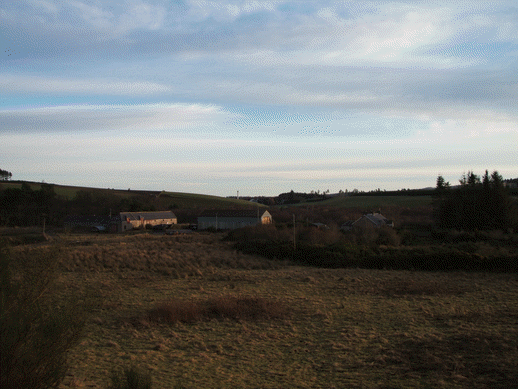
"The Forest of Laundmorgund (Longmorn) was one of the principal royal forests in the north of Scotland.61 Mention is made of the Bishop of Moray, who possessed a portion of it, surrendering the same along with other holdings to King Alexander II., and receiving in exchange the forest of Rothiemurchus.62 Longmorn Forest had a keeper appointed by the Crown to enforce the strict 'forest laws'; and in the days of King Edward I., it abounded with stately oaks that were an equal to those found in the forests of Darnaway.63
The church site at Longmorn is said to be of considerable antiquity, dating back to a community (muinntir) of the Early Church that was establised here. Only about 250 yards to the north of the chapel stood Culbockhillock, the supposed site of a Duidical place of worship. At the time that H.B. Mackintosh was writing, in 1924, he commented that, "This hillock was [only] recently removed."64 Fragments of a food vessel and bones were found scattered on the east side of this site in 1864.65
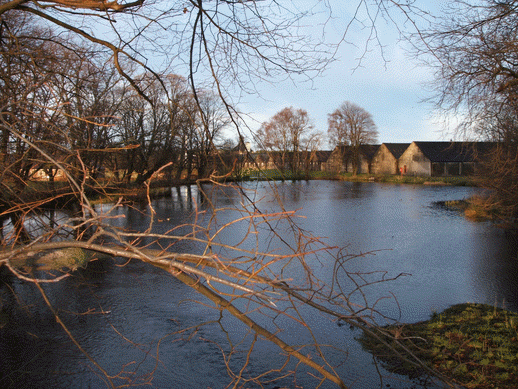
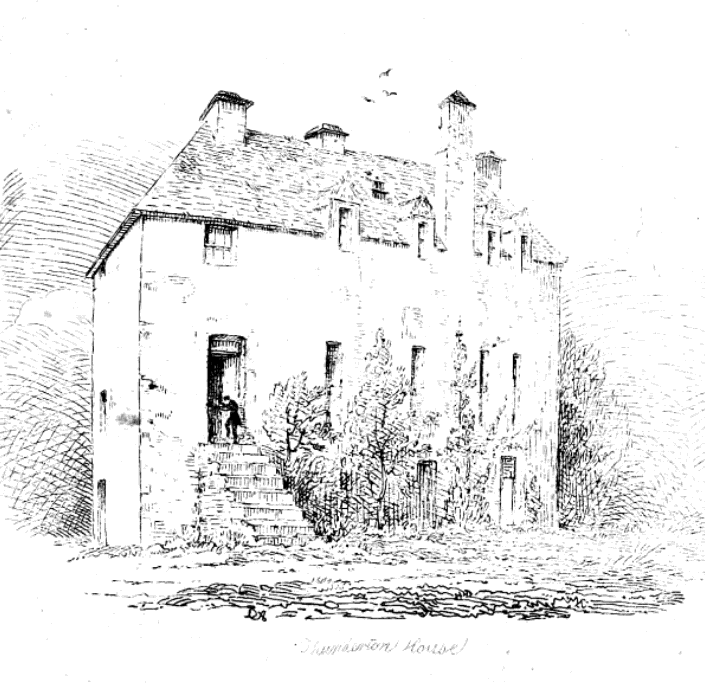
Lachlan Shaw reported that at Thunderton House, once the town residence of the Earls of Moray in the 14th and 15th centuries, after the castle was ruined, there was a private chapel "in the garden".66
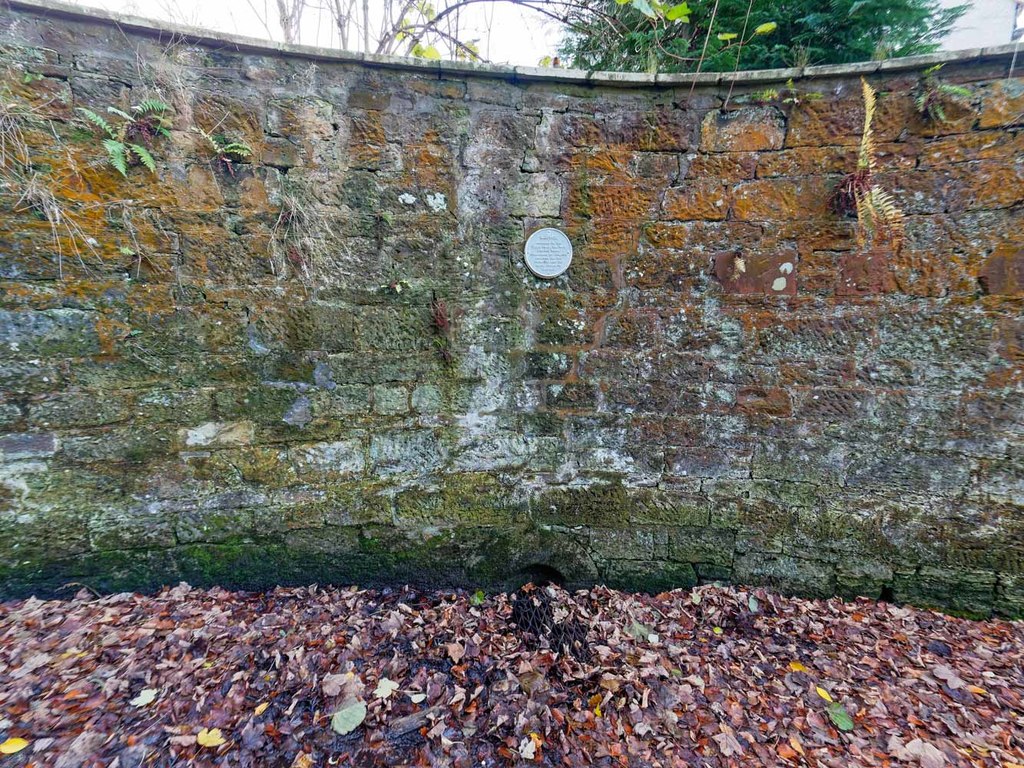
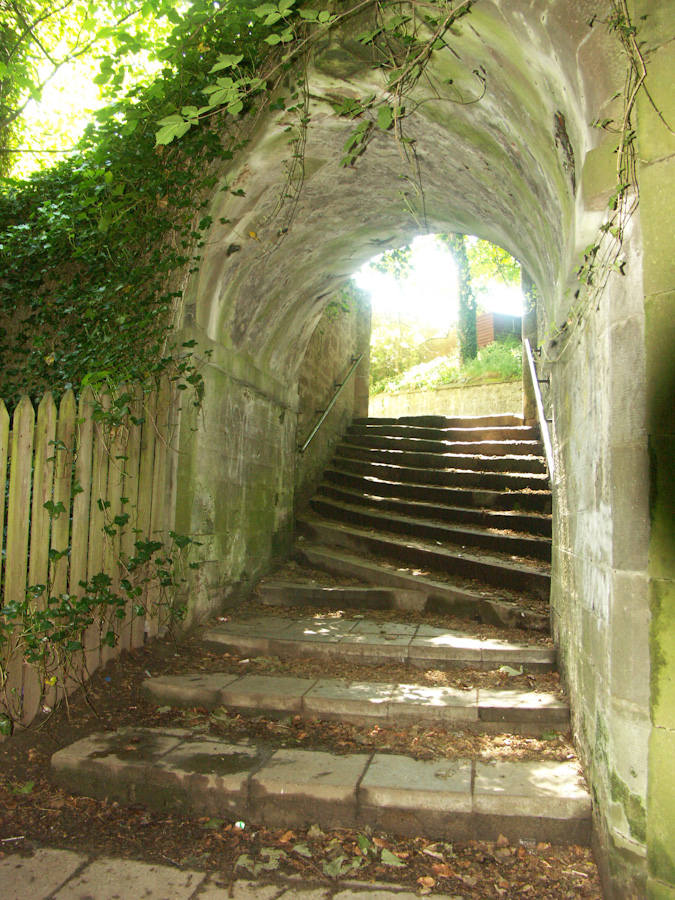
© valenta & H.E.S.
In 1962, the Well was described as follows - "At ground level it measures 0.9 x 0.7 metres, below which it is stepped down 0.2 metres to an opening 0.4 x 0.5 metres which holds water apparently to a depth of about 0.3 metres." Mr. H.B. Mackintosh narrates that the well water "is said to be colder and of more specific gravity (higher density) in summer than in winter."67
1. Mackintosh (1924), p. 27. Return to Text
2. Hall (1998), p. 821; Some archaeologists believe that there are the remains of an 'early church' under the foundations of the Chapter House of the Cathedral but, in the absence of a thorough investigation on this site, the suggestion can not be confirmed. "The possibility of finding remains of an earlier structure on the site of the cathedral is also suggested by the discovery of wall remnants pre-dating the chapter house, which was built after the fire of 1270." Return to Text
3. Simpson & Stevenson (1982), p. 26. Return to Text
4. Allen (1903), Vol. III., facing p. 135. Return to Text
5. Hall (1998), p.809. Return to Text
6. Mackintosh (1914), p.238. "It was precisiely at this time, in the eleventh and twelfth centuries, that the great extension took place of the cultus of St Giles. To this period belongs the foundation of the great Church of St Giles, Cripplegate, in London, and St Giles's Church , Oxford." Return to Text
7. R.R.S., ii., p. 81. (See also the Map on the end pages.) Within the Northern Dioceses, William I. issued acts at Inverness (1), Nairn (1), Auldearn (1), Forres (2), Elgin (14), Fyvie (1), Kintore (2) and Aberdeen (6). The total for Elgin equals all of the others added together! Return to Text
8. RRS, ii, p. 300-301. The gift was to have effect only after the death of the King's chaplain, Richard de Prebenda and his clerk Walter. Return to Text
9. Simpson & Stevenson (1982), p. 26. Return to Text
10. Simpson & Stevenson (1982), p. 27. Return to Text
11. Mackintosh (1914), p. 207. "To every native of Elgin the Muckle Kirk was an object of reverence. To those at a distance it always called up pleasing recollections, and a general feeling of dismay was experienced when it was determined in 1826 to sweep it utterly away. It seems symptoms of decay began to manifest themselves in the roof, and probably another accident like that of 1679 was dreaded. Yet the pillars and walls were as strong as rocks, and many wished that a repair or reconstruction would have been attempted ; but it was decided otherwise. At that time a taste for ancient architecture had little place in the minds of the leading men of the town, and to this and to petty party feeling we owe the destruction of one of Elgin's principal landmarks.
On Sunday, 1st October 1826, the Sacrament was dispensed in old St Giles' Church for the last time. On Monday, the 2nd, the thanksgiving service was preached by the Rev. Dr Richard Rose, of Drainie, and a very solemn and affecting one it was. No sooner had the congregation been dismissed than the contractor began to take the slates from off the roof, and in the course of two months it was levelled to the ground." Return to Text
12. Mackintosh (1914), p. 238. Return to Text
13. Mackintosh (1914), p. 238, quoting Rev. Dr Cooper in the Book of the Bazaar, Elgin, 1895. Return to Text
14. Cramond (1903), p. 91; Cramond (1908), p. 475. Return to Text
15. Mackintosh (1914), p. 239. Return to Text
16. Cramond (1903), p. 165. Translation: Item. It is stated and ordained that, with the consent of the Provost, Baillies, Council, and community of Elgin, no person shall build or set fire to bonfires on the King's Highway (the Town's High Street) on either of the evenings before the feasts of Saint John or Saint Peter, Midsummer, Holy Rood Day and Saint Nichols day, or on the evenings before them, or ring basins, bells or any kind of brass or metal vessels used of old on the eve of Up Helly Aa; nor to pass in pilgrimage to our Lady of Grace Well [at Orton], to the well called [Christ's Well in Strathdon, nor to any other pilgrimage place, under pain of the punishment contained in the Acts of Parliament, enacted there, and causing them to be reputed as manifest idolators.
Christ's Well, which is specifically mentioned as being in Strathdon, is possibly a well at Rathmuriel (Christ's Kirk) but this is far from certain.] Return to Text
17. Mackintosh (1914), p. 218; R.M.S., iii., no. 781, p. 171. Return to Text
18. R.E.M., no. 221, p. 283. Return to Text
19. R.E.M., no. 240, p. 310. Return to Text
20.R.E.M., no. 241, p. 312. "One perticatam (perch) of land, with a croft, lying on the south side of the town of Elgin, between the land of Henry Shepherd (Scyphard) on the west side and the land of Osbert the carpenter on the east side, extending in length to the peat mosses; and three rods of land lying in the 'provostry' (prepositura) of Elgin below Bishopmill (la Bispatung), and half an acre of land lying below 'le Blaremore'; and the annual rent of five shillings which William de Hay and his heirs are bound to pay me yearly from a certain croft of land on the side of the town of Elgin between the land of Andrew Whitewood? (Andree Wythewyde) on the west and the land of Roger son of Ade on the east; and six shilings of annual rents which John Black (Blayk) and his heirs are bound to pay me for one perch of land, with a croft, lying on the north side of the town of Elgin, between the land of the said John Black on the east side and the common street which leads to the house of the 'brother preachers' (Dominicans or Black Friars).
To God and to the glorious Virgin Mary his mother, for the support and part of the support of the chaplains who are to celebrate forever at the altar of the same glorious Virgin in the Church of St Giles the Confessor of Elgin. Recognizing the very refuge of the singular faithful and perpetual helper, desiring reverently to honour in the mother the son, and in the son the mother, holding and having the aforesaid altar of Saint Mary from me and my heirs, as freely and quietly as any burgher can give some rents for the augmentation of divine worship to any one church or altar. And I promise for myself and my heirs, and others who succeed me, by whatever name, they may be deemed to have a firm and fixed rate forever and to observe all the premises and not to come against or do by me or anyone else, any cause or ability in law or deed under the penalty of forty pounds sterling, stipulating also the individual clausess of this gift and concession, of my piety solidly promised, which may be committed and demanded before the entry of a lawsuit in each clause whenever it is contradicted, to be applied to the fabric of the cathedral without remission of the whole or part, with which even if the penalty is paid or not paid, all the above-mentioned things shall remain, each and every one.
And as such, both by my deed of donation and by traditional possession, let a small amount of earth be taken from the perches themselves, under the testimony of the undersigned witnesses, with their own hands to humbly offer and deposit it upon the aforesaid altar of the glorious Virgin. In true and indubitable testimony of the foregoing, my seal, together with the common seal of the said town of Elgin, and the official seal of the Chapter of Moray, are present and affixed.
Given and enacted in the church of the blessed Giles of Elgin before the altar of the same glorious Virgin, on the twelfth day of November, the year of our lord 1363, in the presence of the venerable and discrete person, master John of Duffus, succentor; Malcolm de McAswyn and William de Spyny, canons of the cathedral of Moray; Malcolm de Alves, dean of Caithness; Richard born John; William Ydyl; and Thomas the Glazier (Vitruarii), burgess of Elgin, witnesses to the premises specially required." Return to Text
21. R.E.M., no. 242, p. 313. Return to Text
22. The Feast of Abdon' and Sennen, martyrs under the Diocletian persecution, c.303, was celebrated on 30th July. Return to Text
23. R.E.M., no., 250, p. 325. Return to Text
24. Cramond (1903), p. 44; R.M.S., iii., no. 781, p. 171. Return to Text
25. Cramond (1903), p. 82. Return to Text
26. Cramond (1903), p. 84. Return to Text
27. Cramond (1903), p. 87. Return to Text
28. Cramond (1908), p. 94. Return to Text
29 Cramond (1903), p. 105. Return to Text
30 Cramond (1903), p. 125. Return to Text
31 Cramond (1908), p. 131-2. Return to Text
32. Cramond (1903), p. 159. Return to Text
33. Cramond (1908), p. 183. Return to Text
34. Cramond (1908), p. 426. Return to Text
35. Mackintosh (1914), p. 252. "It is preserved in the Town cadget - an excellent reproduction of it hangs in the Museum - it reads as follows:
36. Mackintosh (1914), p. 201. "The Magistrates and the Incorporated Trades had private altars with officiating priests. These altars were abolished at the Reformation and lofts erected, in all probability above the sites of the various altars." Return to Text
37. Mackintosh (1891), p. 90. Lachlan Mackintosh recounts that he himself had possession of "the Crown" at the time that he was writing and he reminds us that St Crispin was the Patron of all shoemakers. Return to Text
38. Elgin Recs., i., p. 324. Return to Text
39. Mackintosh (1914), p. 202. Return to Text
40. Further details of the lofts of the Incorporated Trades, built within the interior of St Giles Church, are given in the article The Incorporated Trades of Elgin Return to Text
41. Mackintosh (1914), p. 202-203. Return to Text
42. Mackintosh (1914), p. 207. The Little Kirk which stood to the east of the tower wasdemolished by the Magistrates about the year 1800, the stones being used in the building of the Old Academy. Return to Text
43. Mackintosh (1914), p. 207. Return to Text
44. Within the foundation stone was deposited a record which read: "In the name of the Magistrates, the Heritors and the whole community of the Parish of Elgin I deposit this record and coins as a memento to future generations of the period and manner of commencement of building this church. Suffice it for me to say that may the Almighty Governor of all churches protect and prosper the good Established Church of Elgin and may it ever continue to predominate. Signed Alex. Innes, Provost." Return to Text
45. MacMillan (2017), p. 6. "On the south coast of the Moray Firth there has been a strong tradition of building with sandstone. Beds assigned to the Upper Devonian were extensively worked near Elgin. Here the disused quarries in the Rosebrae Beds at Quarry Wood and Bishopmill appear to have supplied the most building stone." Return to Text
46. Innes (1837), Return to Text
46a. Cramond (1908), p. 230. Return to Text
46b. Cramond (1903), pp. 335, 334, and 333. Return to Text
46c. Cramond (1908), p. 483. Return to Text
47. Mackinlay (1914), II., p. 281; Pocock (1887), p. 190. Return to Text
48. Lord High Treasurers Accounts, vol iii., p. 66. Return to Text
49. Fasti, vi., p. 387. Return to Text
50. Recs. Aboyne, p. 412. Return to Text
51. Mackintosh (1891), p. 47. Return to Text
52. Mackintosh (1924), p. 32; Mackintosh (1891), p. 47. Return to Text
53. Cramond (1903), p. 33; R.S.S., iv., p. 517.
54. Cramond (1903), p. 43; R.M.S., ii., no. 1334, p. 272. Return to Text
55. Cramond (1903), p. 40. Return to Text
56. Mackintosh (1924), p. 42. Return to Text
57. Shaw (1882), i., p. 354. Return to Text
58. Personal communication from Elgin Museum, 19/09/2023. Return to Text
59. H.E.S. Canmore Database, ID 16230, Site No.: NJ16SE 3. Strangely they name the 'smiddy' there as Caulrayne whereas OS Maps call it Batchen where there was once a joiner's shop and smiddy along with a few dwelling houses [OS Name Book OS1/12/11/67]. Return to Text
60. Shaw (1882), i., p. 353-4; iii., p. 395. Return to Text
61. Cramond (1903), p. 10-11. "A notre seigneur le Roi pri son hoste de Helgyne Johan Despanyding chanon de Elgyne par Dieu que il y volut doner vingt chynes en sa Foret de Laundmorgund a faire sa eglise de Duffus dont il est chanone. Responsio. Rex vult quod habeat." (To our Lord the King prays his host of Elgin John de Spalding, by the grace of God canon of Elgin, that he (King Edward I) would be pleased to give him twenty oaks in his forest of Longmorn to repair his church of Duffus of which he is canon. Answer. The King wills that he may have them.) [English Rolls, i., p. 469] Return to Text
62. R.E.M., no. 29, p.21 (Were it is called "landa Morgund") Return to Text
63. Mackintosh (1924), p. 103. Return to Text
64. Mackintosh (1924), p. 103. Return to Text
65. CANMORE Id. 16434, Site No. NJ25NW 7. https://canmore.org.uk/site/16434/culbockhillock Return to Text
66. Shaw (1882), vol. II., p. 16. Shaw says, "The Chapel, built in its [Thunderton House's] garden, is the same which went through such a brilliant career of occupants, and at last blazed off in such a bright final conflagration last year." Return to Text
67. Mackintosh (1914), p. 164. Return to Text
Allen, J. Romilly, (1903) The Early Christian Monuments of Scotland, Part 3, Edinburgh: Printed by Neil & Co.. https://ia600204.us.archive.org/20/items/earlychristianmo03alle/earlychristianmo03alle.pdf
Barrow, G.W.S. (1971) Regesta Regum Scottorum, Vol. ii.:The Acts of William I., King of Scots, 1165-1214, Edinburgh: Edinburgh University Press. [RRS, ii]
Burnett, G. (1883) Rotuli Scaccarii Regum Scotorum: The Exchequer Rolls of Scotland, Vol. 6, Edinburgh: H.M. General Register House. [R.S.S. vi] https://archive.org/details/rotuliscaccariir06grea/page/n7/mode/2up
Cant, R.G. & Lindsay, I.G. (1945) Old Elgin: a Description of Old Buildings Illustrated with Photographs and a Map, Elgin: the Elgin Society. Enlarged and Reprinted 1954.
Cramond, Wm. (1903) The Records of Elgin, 1234-1800, Volume 1, Aberdeen: printed for the New Spalding Club.
Cramond, Wm. (1908) The Records of Elgin, 1234-1800, Volume 2, Aberdeen: printed for the New Spalding Club.
Hall, D.W. et al. (1998) 'The Archaeology of Elgin: excavations on Ladyhill and in the High Street, with an overview of the archaeology of the burgh,' P.S.A.S., 128 (1998), 753-829.
Huntly, Charles Gordon, 11th Marquis of, (1894) The records of Aboyne, 1230-1681, Aberdeen: printed for the New Spalding Club. [Recs., Aboyne] https://ia800207.us.archive.org/19/items/recordsofaboynem00news/recordsofaboynem00news.pdf (accessed 12/08/2023)
Innes, C. (1837) Registrum Episcopatus Moraviensis: e pluribus codicibus consarcinatum virca A.D. MCCCC, cum continuatione diplomatum recentiorum usque ad A.D. MDCVVIII, Edinburgh: for the Bannatyne Club. [R.E.M.]
Macfarlane, W. (1906) Geographical Collections Relating to Scotland, Edinburgh: for the Scottish History Society, 3 Vols.
Mackinlay, J.M. (1910) Ancient Church Dedications in Scotland: Volume 1, Scriptural Dedications, Edinburgh: David Douglas.
Mackinlay, J.M. (1914) Ancient Church Dedications in Scotland: Volume 2, Non-Scriptural Dedications, Edinburgh: David Douglas.
Mackintosh, H.B. (1914) Elgin Past and Present: a Historical Guide, Elgin: J.D. Yeadon. https://archive.org/details/elginpastpresent00mack
Mackintosh, H.B. (1924) Pilgrimages in Moray: a guide to the County, Elgin: W.R. Walker & Co., "Courant and Courier" Office.
Mackintosh, L. (1891) Elgin, Past and Present: A Guide and History, Elgin: Black, Walker, & Grassie. https://books.google.co.uk/books?id=RBJBAQAAMAAJ&redir_esc=y&hl=en&pli=1
MacMillan, A. (2017) 'Geology and building stones in the Highlands and Islands', in The Edinburgh Geologist, Nos. 61 and 62. https://www.edinburghgeolsoc.org/eg_pdfs/edinburgh-geologist-62-supp-mcmillan-building-stones.pdf
Pocock, R. (1887) Tours in Scotland: 1747, 1750, 1760, Edinburgh: printed for the Scottish History Society. https://digital.nls.uk/scottish-history-society-publications/browse/archive/126602985#?c=0&m=0&s=0&cv=9&xywh=-332%2C0%2C2410%2C2919
Scott, H. (1926) Fasti Ecclesiae Scoticanae: the Succession of Ministers in the Church of Scotland from the Reformation, Volume 6, the Synods of Aberdeen and Moray, Edinburgh: Oliver and Boyd. [Fasti, vi.]
Shaw, L. (1882) The History of the Province of Moray, Enlarged and brought down to the Present Times by J.F.S. Gordon, Glasgow: Thomas D. Morison, in 3 volumes.
Simpson, A.T. & Stevenson, S. (1982) 'Scottish Burgh Survey: Historic Elgin, the archaeological implications of development', Department of Archaeology, Glasgow University.
CANMORE Database. Historic Environment Scotland. https://canmore.org.uk/
e-mail: admin@cushnieent.com
© 2023 Cushnie Enterprises
